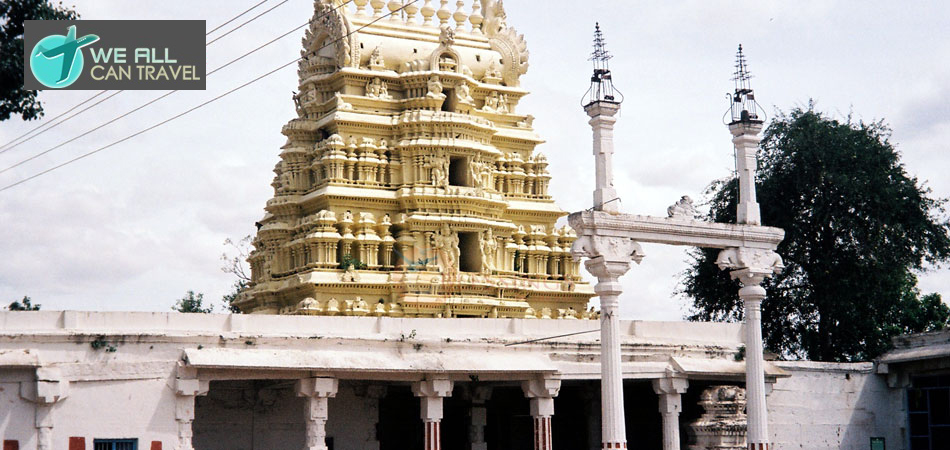Legend Of Gangnapur Temple
Story of how Atri and Anasuya got Datta. Atri was a great tapasvin, - The power of his tapa was great and it increased as each day passed, to the great discomfort of the gods. There was the great danger that Atri might dislodge them from their positions if he chose to do so. The tapobala of Anasuya, his wife was equally great. She understood and practised the principles of dharma as few others did. The couple was thus likely to be a formidable rival to the gods and hence Brahma, Vishnu and Mahesh got together. If some defect could be found out in the behaviour of the two, or if some situation could be contrived where the couple or either of them would be made to behave in contradiction of dharma, all the great punya accumulated by them would be set at naught. After long deliberation the trio decided upon a stratagem. One fine morning, while the sage had gone to the river to take his bath and perform the morning rituals, the three diguised themselves as Brahmins and went to the Atris ashram.
They announced that they were atithis or guests. Anasuya welcomed them, offered them water (padya) and seat (asana) and worshipped them, showing full respect to these learned brahmins. Then according to, the prevalent custom she inquired as to what service she could render them. The atithis were waiting for this very question and pounced upon the opportunity. They told her that they were hungry, had heard that she was capable of giving them lichchhabhojanl-any food-desired for and would appreciate a delicious meal.
However, they would accept it on one condition. There was a visible pause. The condition was not mentioned immediately. Anasuya implored them not to hesitate and speak out whatever they desired. Well-the food would be accepted only if it was served by Anasuya without having her clothes on. The lady was greatly startled, and naturally so What an atrocious demand to make on the host! How could she go before them like that? It was a great dilemma indeed. If she did not bow to their wishes the atithis would be dishonoured-a sin mortifying to one who understands grihastha-dharma. And non-observance of grihastha-dharma meant the destruction of all punya. But Anasuya was equal to the occasion. The three gods had made a sad under-estimate of her prowess. She decided to use her great moral strength to solve the dilemma. She assured the brahmins that their wishes would be fulfilled. She prepared all sorts of rich foods, undressed herself and went out to serve the meals. However, in the meantime the gods had been turned into small babies! They lay there helplessly wailing- Anasuya took pity on them and collected them in her arms. Atri on his return saw them and recognised the real nature of the babes, but took upon himself to raise them. The three later on amalgamated themselves into one, but retained the three heads, and Dattatreya with three heads is there-the incarnation of Brahma, Vishnu and Mahesh together. As to the purpose for which Vishnu assumed the Datta incarnation, the Harivamsha states that his object was to save the world from the curse of ignorance. People had entirely forgotten the Vedas, they never bothered to perform Vedic rites like sacrifices, nor were they any longer aware of the fourfold division of society. In this darkness Vishnu stepped in. Kshama or mercy was the chief characteristic or guna of this incarnation-as is only befitting for one who is out to revive knowledge. Dattatreya revived the study of the Vedas, lifted knowledge from the depths it had reached re-established Vedic rites and sacrifices and enforced the chaturvarnya system once again. This incarnation was, thus, meant for the specific purpose of the revival of true knowledge-sat-dharma. This emphasis on the role of Dattatreya as the saviour of truth and knowledge is of cardinal importance in the understanding of the Datta cult. It is this emphasis that is the origin of the custom of refer
 >> Agasteeshwara Temple
>> Agasteeshwara Temple >> Anantha Padmanabhaswami Temple
>> Anantha Padmanabhaswami Temple >> Ananthasana Temple
>> Ananthasana Temple >> Annapoorneshwari Temple
>> Annapoorneshwari Temple >> Arunachaleshwar Temple
>> Arunachaleshwar Temple